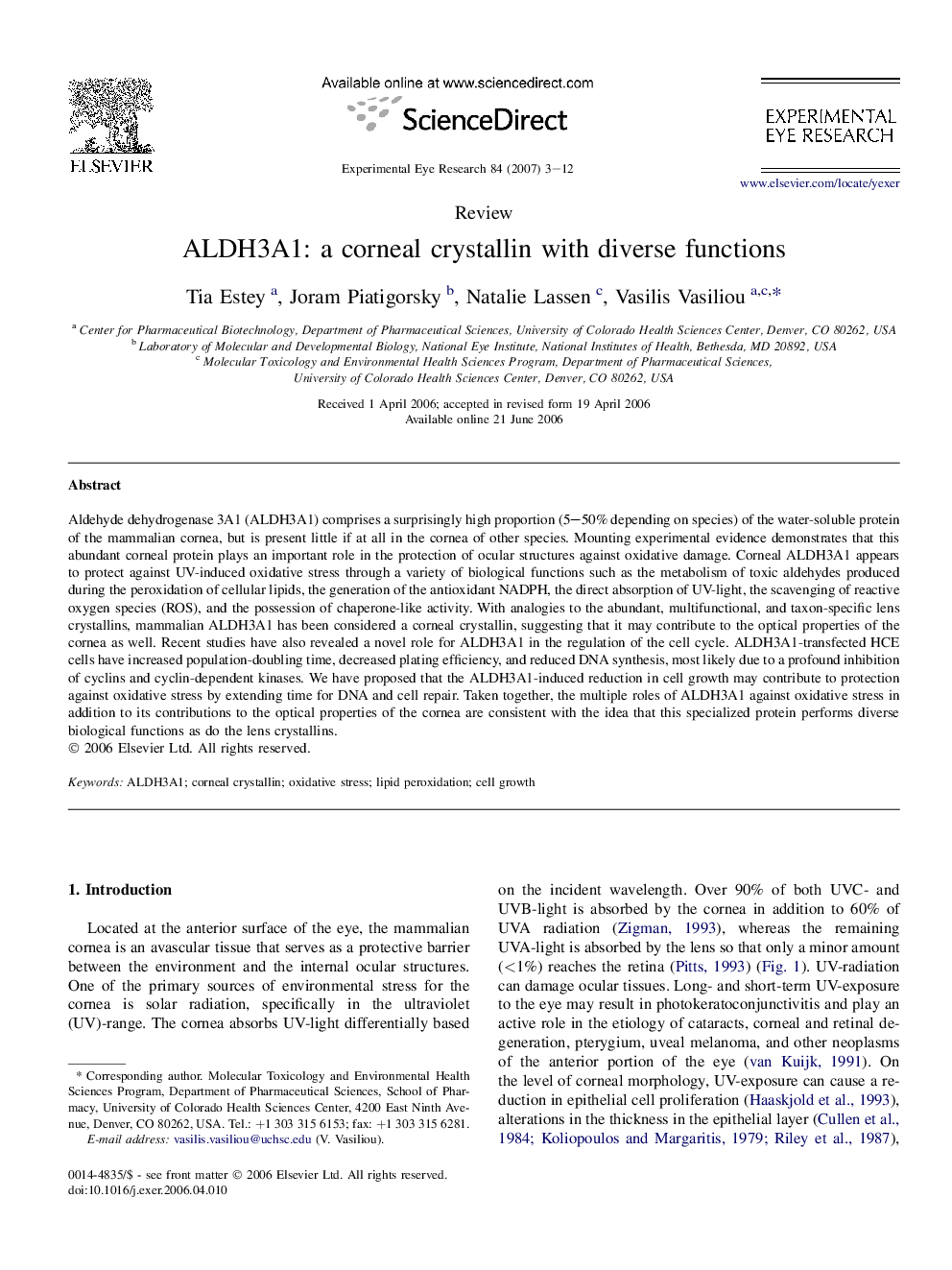| کد مقاله | کد نشریه | سال انتشار | مقاله انگلیسی | نسخه تمام متن |
|---|---|---|---|---|
| 4012390 | 1261192 | 2007 | 10 صفحه PDF | دانلود رایگان |

Aldehyde dehydrogenase 3A1 (ALDH3A1) comprises a surprisingly high proportion (5–50% depending on species) of the water-soluble protein of the mammalian cornea, but is present little if at all in the cornea of other species. Mounting experimental evidence demonstrates that this abundant corneal protein plays an important role in the protection of ocular structures against oxidative damage. Corneal ALDH3A1 appears to protect against UV-induced oxidative stress through a variety of biological functions such as the metabolism of toxic aldehydes produced during the peroxidation of cellular lipids, the generation of the antioxidant NADPH, the direct absorption of UV-light, the scavenging of reactive oxygen species (ROS), and the possession of chaperone-like activity. With analogies to the abundant, multifunctional, and taxon-specific lens crystallins, mammalian ALDH3A1 has been considered a corneal crystallin, suggesting that it may contribute to the optical properties of the cornea as well. Recent studies have also revealed a novel role for ALDH3A1 in the regulation of the cell cycle. ALDH3A1-transfected HCE cells have increased population-doubling time, decreased plating efficiency, and reduced DNA synthesis, most likely due to a profound inhibition of cyclins and cyclin-dependent kinases. We have proposed that the ALDH3A1-induced reduction in cell growth may contribute to protection against oxidative stress by extending time for DNA and cell repair. Taken together, the multiple roles of ALDH3A1 against oxidative stress in addition to its contributions to the optical properties of the cornea are consistent with the idea that this specialized protein performs diverse biological functions as do the lens crystallins.
Journal: Experimental Eye Research - Volume 84, Issue 1, January 2007, Pages 3–12